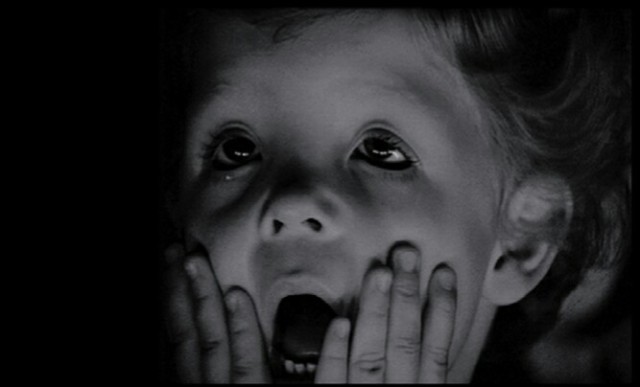“The whole point about cinema, surely, is the close-up of the human face. Huge images such as the Sphinx, Mount Rushmore and the colossal statues in Greece and Rome established the sense of wonder to be had in gazing at magnified physiognomy, but until the movies, such depictions were rare. Even in vast paintings – of battles, landscapes, coronations – the human beings tended to be no more than twice or thrice our size. But Greta Garbo’s inscrutable face was hundreds of times bigger than that of those who read their own thoughts into it. Therein lies the wonder of the movies,” Mark Cousins once wrote.
Latvian filmmaker Herz Frank’s short Ten Minutes Older observes the expressions on the faces of children who are watching some kind of a show in a theatre. Although some writings suggest that what they watch is a theatre play while some others suggest that they are watching a puppet show, Frank’s film offers no definitive evidence about it. All we know is that it’s called Tale About Good and Evil.
Made in 1978, the film comprises of an uncut 10-minute-single shot that begins in the dark auditorium. The children’s faces come alive only once the show starts. The camera zooms in on one child. During the first viewing, my impression, formed on the basis of the music, was that they are watching something along the lines of an early fantasy film that might involve witches and magic tricks and spectacular action set-pieces and rescue operations. And yet, the only action that we see in Ten Minutes Older is the spectrum of emotions on the child’s face, which is no less fascinating.
He laughs. He is awestruck. He writhes in fear. He’s thrilled. He’s anxious. Then he cries. The very next moment, he’s smiling. Indeed, cinema is manipulation. We experience what’s playing on the stage/screen within the film only through the lens of this child’s experience of watching it.
In 1994, Iranian filmmaker Mohsen Makhmalbaf made Salaam Cinema, which was made out of his interactions with people auditioning for a part (in the same film!) where he asks them, among other things, questions about an artist’s responsibility. His peer Abbas Kiarostami also made a film in 1990 on the impact of cinema on the viewer which was, interestingly, titled Close-Up. But in Ten Minutes Older, it is interesting to note that the protagonist is a child, one in whom the cinema can still inspire awe and wonder. The film was made in the late 70s i.e. after the Italian Neorealist Movement and the Nouvelle Vague et al. But in Ten Minutes Older, Frank outright leaves out any psychology whatsoever, avoids giving the characters any specificity, and the focal point of his attention is the purely primal, emotional responses from children.
Just as in Brian De Palma’s 1981 masterpiece Blow-Out, life draws upon cinema and cinema draws upon life. The child in Ten Minutes Older observes art as art observes him.
